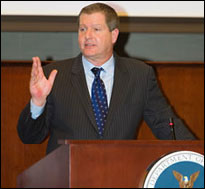Building trust with the public is of primary concern for government institutions. However, few empirical studies have sought to quantify the impacts of communication activities by government in fostering or maintaining this trust. Government bodies can choose to spend communications budgets on a variety of separate activities, and understanding which activities lead to positive press on real achievements is critical, particularly in austere times.
A 2012 study published in the Journal of Public Administration Research and Theory, “Overcoming Negative Media Coverage: Does Government Communication Matter?” analyzes a survey of 881 government and business communicators in order to test the relationship between external communication activities and favorability of media coverage. The researchers, from the University of Maryland, the University of Alabama and Florida State, found that communications activities by government and business communications typically fall into four categories: media interaction; public information; communication planning and research; and multimedia communication.
A wealth of prior studies link positive media coverage and levels of public trust in government, the authors note, adding, “While it may be too simplistic to say media coverage of government drives public perception, government administrations are not helping their own images when they do not use communication tactics to promote their achievements.”
The study’s findings include:
- Overall, business experienced more favorable news coverage than did government agencies. Within government, 15.3% of respondents reported that their organization had experienced unfavorable media coverage in the past six months and 65.3% reported favorable media coverage over that time period.
- The communications activities most associated with positive media coverage are different in the two sectors. For government, direct interaction with the news media — “news releases, news conferences, media interviews, responding to media inquiries, pitching stories to the media, and tracking media clips” — is crucial. For business, activities involving public information — brochures, fliers, guides, print advertising — are most important for favorable coverage. “Public information positively affects media coverage for the business subsample but not for the government subsample.”
- “A somewhat surprising finding is that communication planning and research, including activities such as developing strategic plans, developing crisis communication plans, conducting primary research, and writing fact sheets, is negatively associated with positive news coverage for both government and business samples. One explanation is that when scarce time and resources are spent in planning and research, activities that will directly influence the tone of news coverage, such as media interaction and public information, are undercut.”
- Certain internal shortcomings and constraints acutely hurt government’s ability to build trust: Lack of cross-department support and communication budget inadequacy are associated with negative media coverage for government.”
- “The implication is that government communicators should, within the regulatory boundary, more proactively work with the media to publicize government programs, activities, innovations, and performance, as suggested by some public administration scholars … Positive coverage of government news is associated with higher levels of government trust and confidence … and positive media exposure also can enhance the public’s political efficacy and activity.”
The researchers conclude, “Public managers need to recognize that the nature of government work — more political influence and external information demand — does not necessarily lead to negative news coverage. Although management strategies may not be able to fully address the problem of negative news coverage given factors outside managers’ control, more proactive media interaction does help improve media coverage. If government agencies want their communication staffs to help generate positive news coverage, they need to value the role of communication, find a way to increase agency wide support for communication, and allocate more for communication budgets.”


Expert Commentary